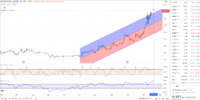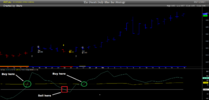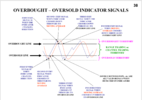- Joined
- 28 December 2013
- Posts
- 6,392
- Reactions
- 24,319
Hi Skate,
Hi Skate, in your above post you mention "The Money Flow Index (MFI) is a technical oscillator that uses price & volume data for identifying overbought or oversold signals in an asset that is well explained in @DrBourse 1st manual. It can also be used to spot divergences that warn of a trend change in price. The oscillator moves between 0 & 100".
I feel I should reitterate that I use a Centreline on the MFI, not the normally accepted O'Bought & O'Sold Lines of 60 & 40.
I reckon that would interfere with your 'backtesting' of my approach to trading.
Cheers M8
Thanks for the heads up
I’ve also acknowledged how hard it is to “Code” the skills that others possess, let alone trying to interpret what you have just read. When there are so many variables with fundamentals thrown in “not to mention” mental & visual skills - it’s impossible to have signals aligned.
Thanks for the additional information. This small exercise was extremely rewarding because I have a better idea of how to marry those indicators to achieve a positive outcome.
Skate.






